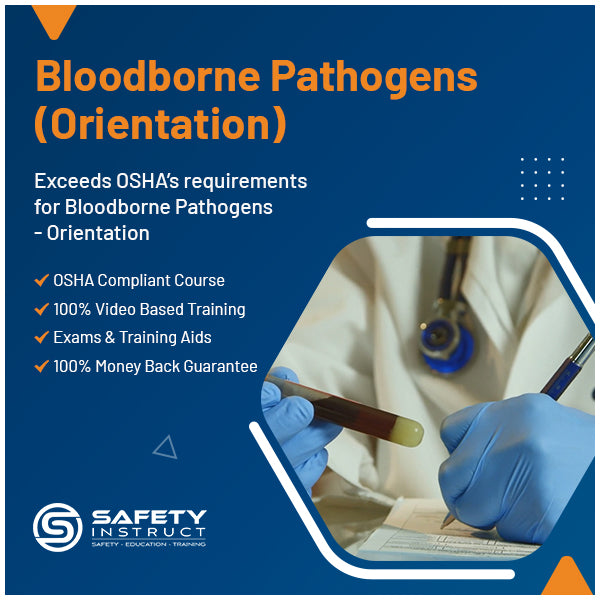No Products in the Cart
Click Here to Schedule a FREE Consultation
Phone: 866-943-6887 Email: sales@safetyinstruct.com


There is a danger in every workplace, regardless of industry or environment, that is always present. It can happen at any time with long-lasting consequences. The danger is exposure to bloodborne pathogens. The reason bloodborne pathogens are so dangerous is that they cannot be seen, and there is no way to tell if someone is infected. Nor can you tell by looking at spilled blood if it is infected. But if it is, and you come in contact with it, you run a risk of becoming infected yourself, and that infection can have permanent consequences.
What are Bloodborne Pathogens?
Bloodborne pathogens are microorganisms in blood that carry diseases. These include Hepatitis B, Hepatitis C, and the Human Immunodeficiency Virus, or, HIV AIDS. What makes these pathogens so dangerous is their ability to spread between people and populations quickly. The viruses spread through exposure. This can be exposure to blood or other bodily fluids such as mucus and saliva. The main danger with bloodborne pathogens is they are not visible, and there is no way to tell if someone is infected. Therefore, to work safely, you must treat all bodily fluids as potentially dangerous and take the precautions you need to stay safe and prevent exposure. This can be done, for example, by wearing personal protective equipment such as gloves or masks.
Needlestick Prevention
One of the most common ways for a person to become exposed to Bloodborne Pathogens is through a needle stick. This usually happens after a needle is used and one attempts to recap it incorrectly. For example, by holding the needle in one hand and the cap in the other. If you do this, and you miss, even a small nick of the needle into your hand or finger can cause the pathogen to spread to you. This is true even if you are wearing protective gloves, as the needle can pierce the glove and stab your skin. The best way to recap a needle is to lay the cap on a table, then trace the needle into it before using your other hand to secure the cap. Many work environments are now using needleless systems or engineered sharp protection systems, but you should always be aware of the possibility and take the precautions to protect yourself.
Prevention & Cleanup
Many people believe that exposure to bloodborne pathogens is only a risk for those who work in healthcare, since they are actively around blood and needles on a regular basis. But, bloodborne pathogens are a danger for all industries. Remember, Bloodborne pathogens are not limited to blood, but can also exist in saliva, mucus, and bodily fluids. If an infected person is sick, and coughing and sneezing, this can expose you to a pathogen. And, even a small cut, like a paper cut, can spread a pathogen if the person is infected. Unfortunately, you can not tell if someone is carrying a pathogen by looking at them. Your safest bet is to treat every incident as a potential exposure and take the precautions you need to keep safe. This means creating a barrier, through gloves or a mask, any time you are around blood or helping a sick coworker. If you ever come across a spill or exposed blood, always take immediate action. Secure and flag the area to alert others, and make sure to wear personal protective equipment and use sanitizing cleaners if you are responsible for cleaning it up. Any rags or towels used in clean up should be bagged in red hazardous waste bags and disposed of properly.


